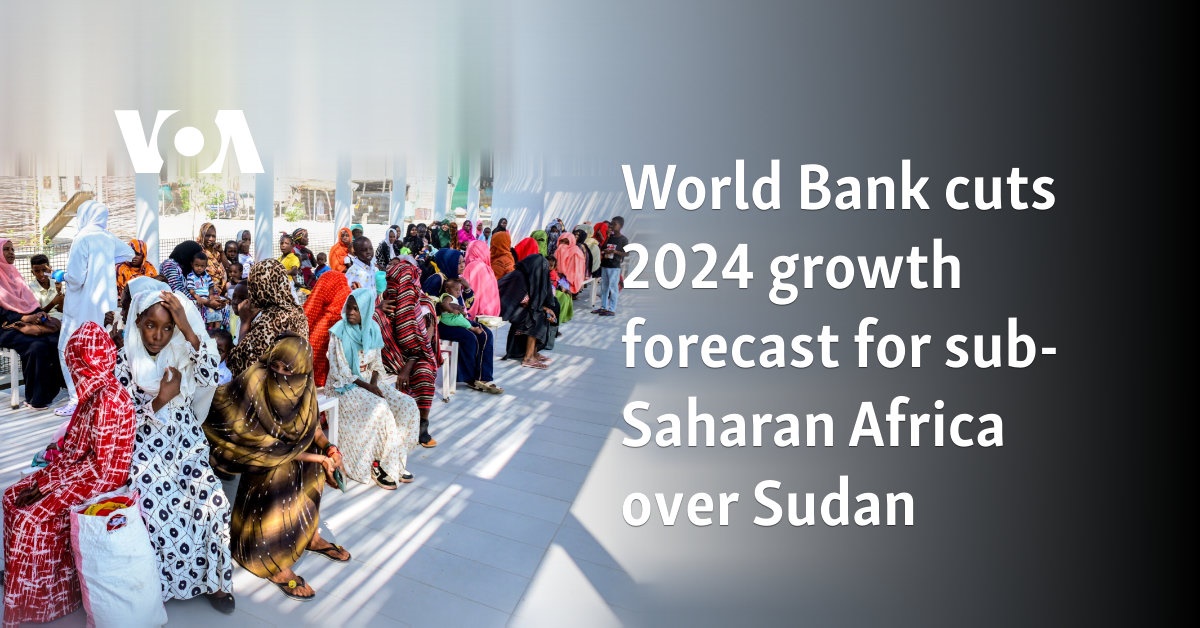World
World Bank cuts 2024 growth forecast for sub-Saharan Africa over Sudan

The World Bank said on Monday it had lowered its economic growth forecast for sub-Saharan Africa this year to 3% from 3.4%, mainly due to the destruction of Sudan’s economy in a civil war.
However, growth is expected to remain comfortably above last year’s 2.4% thanks to higher private consumption and investment, the bank said in its latest regional economic outlook report, Africa’s Pulse.
“This is still a recovery that is basically in slow gear,” Andrew Dabalen, chief economist for the Africa region at the World Bank, told a media briefing.
The report forecast next year’s growth at 3.9%, above its previous prediction of 3.8%.
Moderating inflation in many countries will allow policymakers to start lowering elevated lending rates, the report said.
However, the growth forecasts still face serious risks from armed conflict and climate events such as droughts, floods and cyclones, it added.
Without the conflict in Sudan, which devastated economic activity and caused starvation and widespread displacement, regional growth in 2024 would have been half a percentage point higher and in line with its initial April estimate, the lender said.
Growth in the region’s most advanced economy, South Africa, is expected to increase to 1.1% this year and 1.6% in 2025, the report said, from 0.7% last year.
Nigeria is expected to grow at 3.3% this year, rising to 3.6% in 2025, while Kenya, the richest economy in East Africa, is likely to expand by 5% this year, the report said.
Commodities
The sub-Saharan Africa region grew at a robust annual average of 5.3% in 2000-2014 on the back of a commodity supercycle, but output started flagging when commodity prices crashed. The slowdown was accelerated by the COVID pandemic.
“Cumulatively, if that were to continue for a long time, it would be catastrophic,” Dabalen warned.
Many economies in the region were starved of public and private investments, he said, and a recovery in foreign direct investments that started in 2021 was still tepid.
“The region needs much, much larger levels of investments in order to be able to recover faster… and be able to reduce poverty,” he said.
Growth across the region is also hamstrung by high debt service costs in countries like Kenya, which was rocked by deadly protests against tax hikes in June and July.
“There are staggering levels of interest payments,” Dabalen said, attributing this to a shift by governments to borrow from financial markets in the last decade and away from the low-priced credit offered by institutions like the World Bank.
Total external debt among economies has risen to about $500 billion from $150 billion a decade and a half ago, he said, with the bulk owed to bond market investors and China.
Chad, Zambia, Ghana and Ethiopia went into default in the last four years and have overhauled their debt under a G20 initiative Common Framework. Ethiopia is still working to restructure its debt while the others have completed their debt restructuring.
“As long as these debt issues are not resolved, there is going to be a lot of ‘wait and see’ games going on, and that is not good for the countries, and certainly not good for the creditors as well,” he said.









